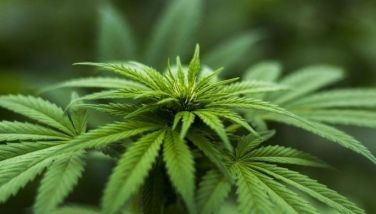Malunggay, kakawate, etc good as livestock feeds
March 30, 2003 | 12:00am
Don’t look now, but leaves of malunggay, kakawate, acacia, and other plant species are good as leaf meals.
This was found in a study done by a research team of the UP Los Baños-Dairy Training and Research Institute (UPLB-DTRI) led by Dr. Teresita Atega.
The project, titled "Performance evaluation of dairy goats fed protein-rich fodder", was funded and coordinated by the Department of Science and Technology-Philippine Council for Agriculture, Forestry and Natural Resources Research and Development (DOST-PCARRD).
Leaf meals are dried, ground leaves and browseable twigs used as livestock feed.
Dr. Elaine F. Lanting, assistant director of PCARRD’s Livestock Research Division, said that leaf meal is not traditionally used in ruminant rations as these animals can be fed with fresh fodder.
"However," Dr. Lanting explained, "there are instances when meal preparation is imperative and becomes the most practical way of conserving excess foliage."
Ipil-ipil has so far been the best known source of leaf meal because of its high nutritive value. In fact, in the early 1980s, growing ipil-ipil for its leaves developed into a cottage industry in Central and Eastern Visayas and northern Luzon.
However, the emergence of a pest known as psyllid (jumping plant lie) which attacked ipil-ipil resulted in the decline of the industry.
Thus, researchers began evaluating other fodder trees and shrubs as possible substitute to ipil-ipil for leaf meal production.
Reporting on the DTRI study’s results, Dr. Atega averred: "Kakawate (Gliricidia sepium), acacia (Samanea saman), flemingia (Flemingia macrophylla), rensonii (Desmodium rensonii), style (Stylosanthes guianensis) and malunngay (Moringa leifers) can be prepared into leaf meals as protein sources in ruminant rations."
At least 3-4 kilogram herbage is needed to prepare a kilogram of leaf meal depending on the fodder species used. The crude protein (CP) content ranges from 16.8 percent (stylo) to 28.8 percent (malunggay). – Rudy A. Fernandez
This was found in a study done by a research team of the UP Los Baños-Dairy Training and Research Institute (UPLB-DTRI) led by Dr. Teresita Atega.
The project, titled "Performance evaluation of dairy goats fed protein-rich fodder", was funded and coordinated by the Department of Science and Technology-Philippine Council for Agriculture, Forestry and Natural Resources Research and Development (DOST-PCARRD).
Leaf meals are dried, ground leaves and browseable twigs used as livestock feed.
Dr. Elaine F. Lanting, assistant director of PCARRD’s Livestock Research Division, said that leaf meal is not traditionally used in ruminant rations as these animals can be fed with fresh fodder.
"However," Dr. Lanting explained, "there are instances when meal preparation is imperative and becomes the most practical way of conserving excess foliage."
Ipil-ipil has so far been the best known source of leaf meal because of its high nutritive value. In fact, in the early 1980s, growing ipil-ipil for its leaves developed into a cottage industry in Central and Eastern Visayas and northern Luzon.
However, the emergence of a pest known as psyllid (jumping plant lie) which attacked ipil-ipil resulted in the decline of the industry.
Thus, researchers began evaluating other fodder trees and shrubs as possible substitute to ipil-ipil for leaf meal production.
Reporting on the DTRI study’s results, Dr. Atega averred: "Kakawate (Gliricidia sepium), acacia (Samanea saman), flemingia (Flemingia macrophylla), rensonii (Desmodium rensonii), style (Stylosanthes guianensis) and malunngay (Moringa leifers) can be prepared into leaf meals as protein sources in ruminant rations."
At least 3-4 kilogram herbage is needed to prepare a kilogram of leaf meal depending on the fodder species used. The crude protein (CP) content ranges from 16.8 percent (stylo) to 28.8 percent (malunggay). – Rudy A. Fernandez
BrandSpace Articles
<
>
- Latest
Latest
Latest
April 10, 2024 - 5:12pm
By Ian Laqui | April 10, 2024 - 5:12pm
March 4, 2024 - 3:32pm
By Ian Laqui | March 4, 2024 - 3:32pm
March 4, 2024 - 2:12pm
By Kristine Daguno-Bersamina | March 4, 2024 - 2:12pm
February 17, 2024 - 2:31pm
February 17, 2024 - 2:31pm
February 13, 2024 - 7:24pm
By Gaea Katreena Cabico | February 13, 2024 - 7:24pm
Recommended




























